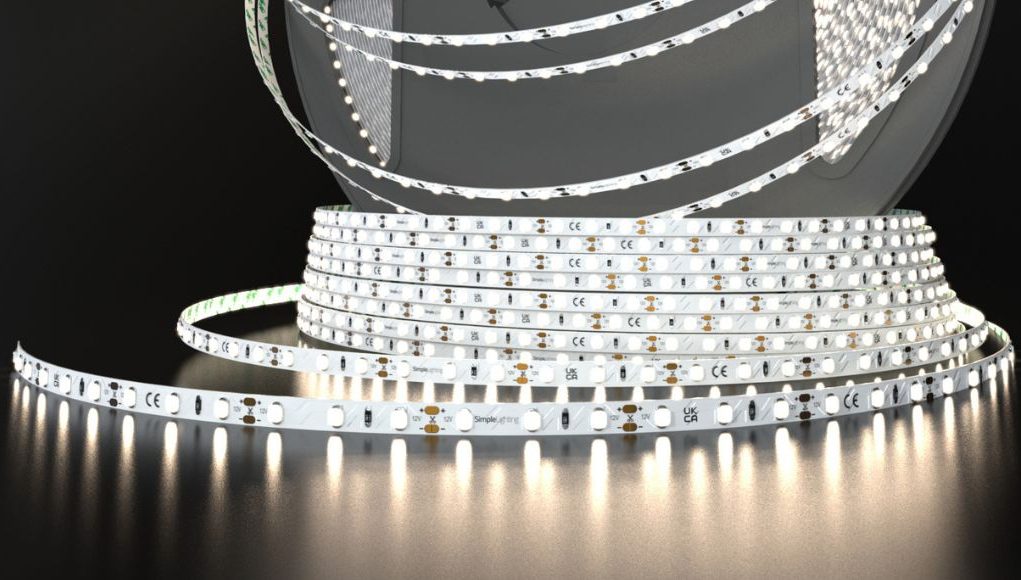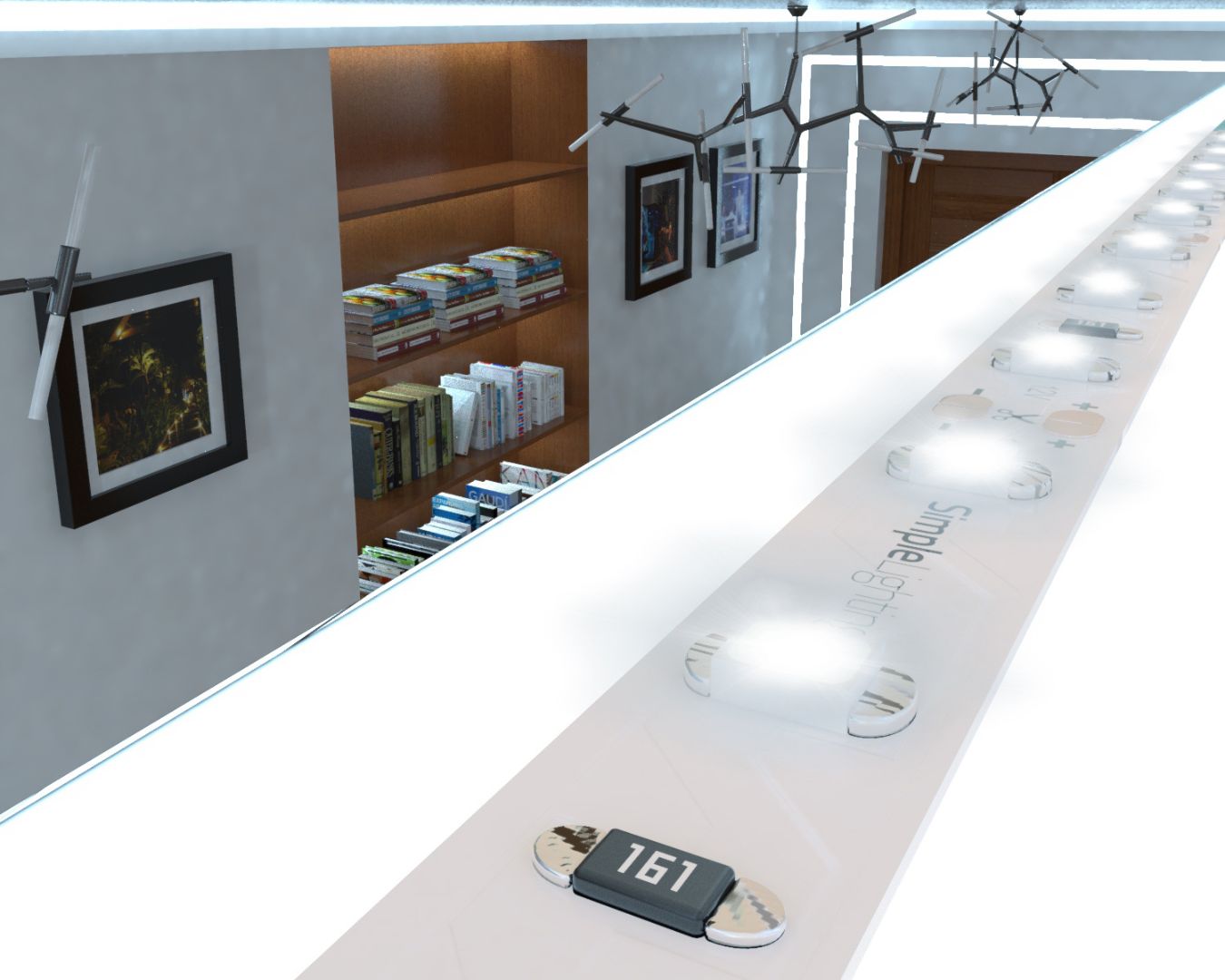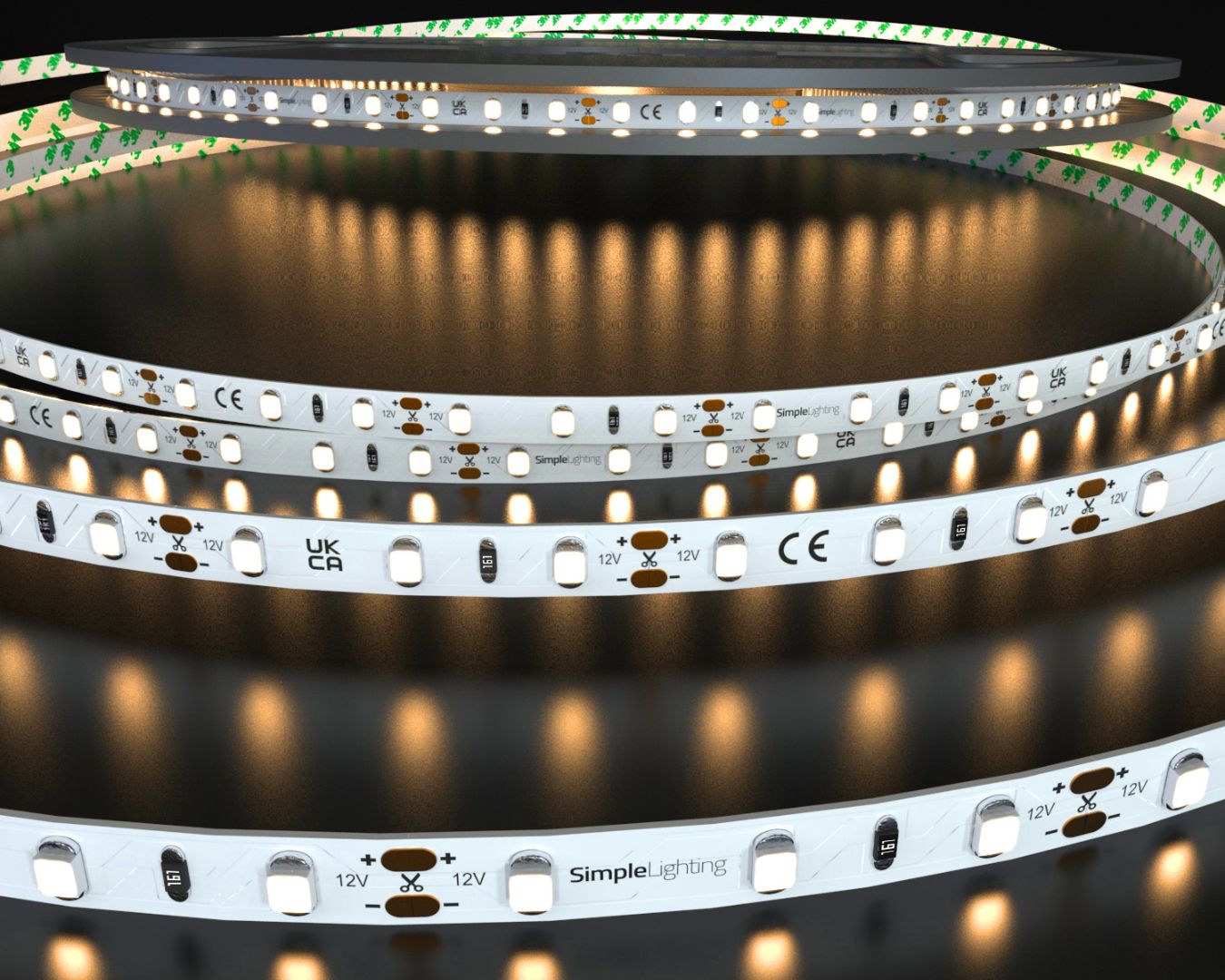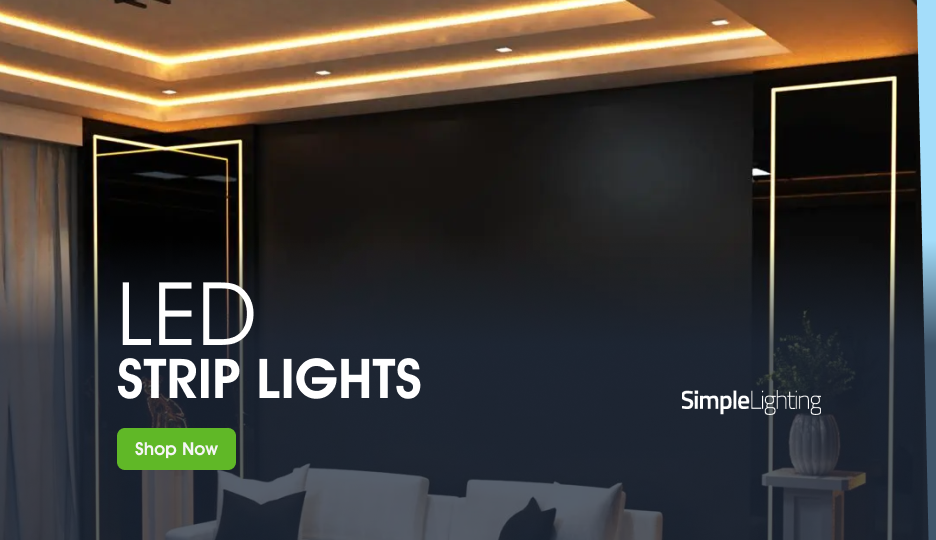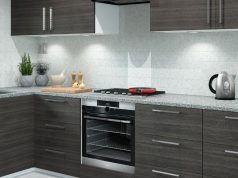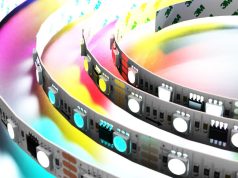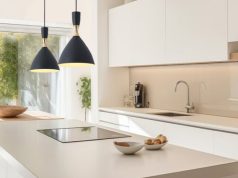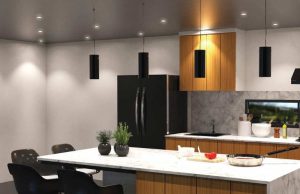LED strip lights.
You’ve heard the name countless times. Who wouldn’t?
It’s the lighting fixture that has revolutionised how we illuminate our homes and businesses, offering flexibility, creative control, and most importantly, efficiency.
But then you start browsing options… and you quickly notice terms like lumens, LEDs per metre, and 12V vs 24V appearing everywhere.
What do these jargons actually mean? And how do they affect your lighting results? In their simplest form, they’re (respectively) the brightness, density, and voltage of your LED strip lights.
This guide aims to uncover all of these and help you choose the best LED strip setup for your space. We hope you’re ready to achieve the perfect blend of beauty, efficiency, and practicality.
Let’s get glowing!
Understanding LED Strip Brightness
One of the reasons for getting LED strip lights is, well, the light.
Lumens vs Watts — Why Lumens Matter Most
Is this you?
Goes shopping for lights and looks at the watts to determine brightness.
If you’re guilty of this, then let us be the ones to tell you: this is an obsolete way of thinking. Why? Because while watts tell you how much power the strip consumes, they don’t necessarily reflect light output.
A higher wattage doesn’t necessarily mean a light fixture is brighter.
For LEDs, Lumens (lm) are the true measure of brightness. The higher the lumens, the brighter the light.
- Watts (W): Power consumption
- Lumens (lm): Actual light output
When it comes to efficiency, LEDs outperform traditional bulbs by a long shot. What that means is that they produce more lumens per watt.
For example, a 10W LED strip can easily match or exceed the brightness of a 60W incandescent lamp. That means less power is consumed for more usable light in your space.
How Brightness Affects Lighting Type
Brightness plays a vital role in determining how suitable an LED strip is for task versus ambient lighting.
What’s the difference?
Task lighting: Requires higher brightness for functionality. Think under-cabinet kitchen lighting, bathroom mirrors, or workstations.
Typically, you’ll want LED strips with 1000–1500 lumens per metre for clear, practical illumination.
Ambient lighting: Focuses more on atmosphere and mood.
Lower brightness levels (around 300–700 lumens per metre) create a soft, relaxing effect, ideal for bedrooms or living rooms.
Pro Tip:
You don’t need to use only one type of lighting in each of your spaces. You can also layer lighting. Actually, it IS recommended you layer your lighting.
That’s combining bright task lighting with lower-level accent strips to achieve both functionality and comfort.
Typical Brightness Levels for Different Uses
Here’s a general guide to help you visualise brightness requirements:
- Kitchen general — (375 lm/m²) Ensures everything is visible
- Kitchen working area — (750 lm/m²) Needs bright, focused light for visibility
- Living room cove lighting — (500 lm/m²) Gentle, diffused glow
- Bedroom general — (375 lm/m²) Warm, cosy ambience
- Bathrooms — (500 lm/m²) Bright, uniform illumination
- Halls, landings, and stairs — (250 lm/m²) Visibility and safety
- Outdoor areas — (50-300 lm/m²) Depending on the lighting need
Why you want the right brightness
Choosing the right brightness ensures your space looks good and feels right. That it’s neither too harsh nor too dim.
You want your LED strip light’s brightness to perfectly match the activity in the space.
What LED Strip Density Means
Defining LED Density
LED density refers to the number of LED chips mounted per metre of the strip. Common densities include 30, 60, 120, 180, or even 240 LEDs per metre.
But why is this important?
Have you ever seen a TV backlight that uses an LED strip with visible “gaps” that make the light distracting instead of useful?
The point is simple: The higher the density, the more continuous and uniform the light output appears.
Low-density strips may produce visible “dots” of light, while high-density options deliver a smooth, seamless glow, which is especially useful when installed in visible areas or behind diffusers.
To put it simply:
- More LEDs per metre = brighter, smoother light.
- Fewer LEDs per metre = softer, dotted light effect.
Low Density (Soft, Ambient Lighting)
Low-density LED strips have around 30 LEDs per metre, and are perfect for subtle illumination and decorative touches.
And since they have fewer LED nodes in the strip, they consume less power, produce minimal glare, and can create cosy atmospheres.
They’re best used for:
- Bedroom coves and shelves
- Decorative trim and edge lighting
- Accent lighting staircases, hallways, etc.
These are better used for accent lighting rather than primary illumination. It’s about creating visual interest, not lighting up the whole room (it can’t).
Medium Density (Balanced, Decorative Lighting)
This is what you’d call a “standard” density (typically 60 LEDs per metre). They strike a nice balance between brightness and subtlety.
These strips work beautifully in areas where you want light to be visible but not overpowering.
Use these for:
- Feature walls and under-cabinet lighting
- Bar counters and kitchen kickboards
- Indirect backlighting behind furniture or TVs
- Retail displays or shelves
This density provides enough light to enhance a space’s design while maintaining a welcoming warmth.
A.K.A., a popular all-round choice for many home and commercial applications.
High Density (Task Lighting)
These are the 120 LEDs per metre strips. These strip lights deliver impressive brightness and uniformity, which makes them perfect for task lighting.
Use these for:
- Desk and study areas
- Kitchen island and cabinets
- Closet and wardrobe lighting
Ultra-High Density (Professional & Architectural Lighting)
These are the 180 and 240 LEDs per metre strips.
If the high-density task lighting strips are already impressive when it comes to brightness and uniform lighting, you’ll be shocked to know that these are even better.
The close spacing eliminates visible hotspots, especially when installed behind diffusers or in aluminium channels.
These are commonly used for:
- Commercial interiors and showrooms
- Architectural lighting
- Laboratory lighting
- Photography and videography
- Signage lighting
The higher the density, the cleaner and more professional the lights look.
But they do require more power and generate slightly more heat, but modern aluminium profiles help dissipate it safely.
Understanding LED Strip Voltage
LED strips are what we call “low-voltage lighting” and commonly come in 12V and 24V versions. Though not common, there are also those that come in 5V.
But why is it important to know this? How does voltage significantly affect how your lighting system behaves?
Well, for starters, voltage determines the maximum run length (how long before voltage drop LED strip can be, which causes dimming), the power supply size, and even installation safety.
5V LED Strips
Let’s start with the less common one.
These are usually USB-powered and ideal for short, decorative applications like computer monitors, small displays, or accent backlighting.
However, due to the low voltage, they can’t power long runs effectively without noticeable brightness drop-offs.
Pros: Safe, low energy, easy to power via USB.
Cons: Limited run length (usually under 2 metres).
If you’re thinking of using this to light your ceilings… don’t.
12V LED Strips
12V is one of the most common voltages for home lighting using LED strips. It’s easy to install, widely supported by accessories, and ideal for medium-length runs.
They’re great, but they’re not perfect. Here are some pros and cons.
Pros: Simple installation, good balance of efficiency and flexibility.
Cons: Voltage drop becomes noticeable beyond five metres unless power is fed from both ends.
In other words, these are the best options for shorter run lighting projects.
Use these for kitchen under-cabinets, furniture lighting, and bedroom coves.
24V LED Strips
24V LED strip handles longer runs and higher brightness more efficiently, as they require less current for the same power.
That means reduced voltage drop and more consistent light along the strip.
Pros: Longer runs (up to 10 metres), efficient, professional-grade.
Cons: Slightly higher initial cost, requires a compatible 24V driver (which makes sense since the 12V ones also need a 12V power supply).
Ideal for commercial spaces, high ceilings, large installations, and continuous lighting runs.
It’s good to keep these differences in mind (especially the lengths) to easily determine which voltage you’ll need for your lighting project.
Which also brings us to our next topic.
How to Choose the Right LED Strip
Alright. So, now you finally understand brightness, density, and voltage. How do you put it all together?
This should also be true for other types of lighting, but the right LED strip depends on your space, purpose, and power setup.
Here’s a step-by-step guide that should help you decide:
1. Identify Your Purpose
Ask: Is this light for ambience, decoration, or task use?
- Ambient: Choose lower brightness (300–700 lm/m), low-to-medium density (30–120 LEDs per metre).
- Task: Choose higher brightness (1000+ lm/m), medium-to-high density (120+ LEDs per metre).
- Decorative: Lower brightness and density work beautifully. Think creative colours like RGB or warm white.
2. Measure Your Space
Here’s a rule of thumb to guide you: Measure twice, cut once.
The length of your LED strip will determine the voltage and power supply your setup will need.
For runs longer than five metres, consider 24V to avoid voltage drop. If it’s a smaller project (like under shelves), 12V or even 5V can work fine.
3. Match with Power Supply
Every LED strip requires an LED driver that matches its voltage and total wattage. So if you’re running a 12V strip, only use a 12V driver/power supply. If you’re running a 24V strip, use a 24V driver.
Never use the wrong power supply unless you want to ruin your lights.
A power supply will also have a maximum wattage capacity.
Here’s a tip: Always choose a driver rated at 10% to 20% higher wattage than the total load of the run for safety and longevity. That’s called a safety margin.
For example, if your strips total 40W, choose a 50W driver.
4. Consider Installation Type
Will your LED strip be visible or hidden?
If visible, go for a higher density for smoother light.
If hidden behind diffusers or coves, medium density often suffices. Outdoor areas require IP65+ waterproofing.
5. Don’t Forget Accessories
Aluminium profiles, diffusers, and dimmers help control heat, enhance appearance, and adjust brightness, respectively.
For smart homes, you can even integrate LED strips with Wi-Fi or Zigbee controllers for app or voice control.
For compatible, high-quality LED drivers, controllers, and mounting channels, check out Simple Lighting’s full range.
Benefits of Proper LED Strip Selection
Choosing the right combination of brightness, density, and voltage isn’t just about looks.
All of these affect performance, safety, and energy use.
Here’s a more detailed look:
1. Consistent Lighting Quality
With the correct density and voltage, you’ll avoid uneven lighting, dimming, or visible hotspots. Your installation will look professional, continuous, and visually pleasing.
Even a small space can look amazing with lighting that does not flicker.
2. Energy Efficiency & Cost Savings
LEDs are already energy efficient, but matching brightness to your actual needs prevents overconsumption.
You’ll get exactly the right amount of light, saving electricity and reducing costs over time.
3. Longer Lifespan
Properly powered LED strips run cooler and last longer.
Using the right driver and voltage prevents stress on the LEDs and extends their working life to tens of thousands of hours.
4. Safer Installations
Mismatched voltage or undersized power supplies can cause overheating or premature failure.
By choosing the correct LED strip, you ensure a safer setup that’s compliant with UK standards and ready for years of reliable operation.
Light Smarter, Not Harder
LED strip lighting gives you unparalleled flexibility to transform your space, from subtle mood lighting to bright task illumination.
But achieving the perfect result means you need to understand three key things:
Brightness (Lumens): Determines how bright your light will be. Choose higher lumens for tasks, lower for ambience.
Density (LEDs per metre): Affects how uniform and smooth your light looks. Higher densities mean smoother, professional results.
Voltage (5V, 12V, 24V): This affects power efficiency, run length, and installation scale. Choose based on your project size.
Make all of these elements work in harmony, and you’ll enjoy efficient, consistent, and beautiful lighting for your home or business.
Ready to find your perfect LED strip? At Simple Lighting, we make it easy to choose the right LED strip for any project. Check out our collection today!


